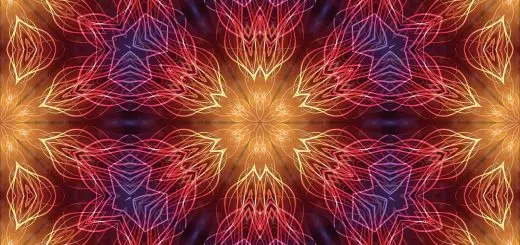Exploring Sigils in Different Cultural Traditions

Looking for more amazing products? Check out our online store and explore our collection here! Happy shopping!
Before diving in, please note: This post is for informational purposes only. If you’d like to know more about how we approach topics, feel free to check out our friendly Disclaimer Page.
Hey there, amazing readers! 
We’re committed to delivering quality posts, and your support (even just sticking around despite the ads) means everything to us. So, bear with us, and thanks for helping us keep the good vibes rolling. Now, on to the fun stuff!
TRANSLATE BUTTON AT THE END OF THE ARTICLE
Introduction to Sigils in Different Cultures
Sigils, mystical symbols imbued with intention and power, have a rich history spanning various cultural traditions across the globe.
These symbols have been used for centuries as a means of connecting with the spiritual realm, manifesting desires, and invoking protection.
Each culture has its unique interpretation of sigils, incorporating them into their religious and magical practices.
From ancient Egypt to Norse mythology, from traditional Chinese medicine to Native American culture, sigils hold a significant place in the beliefs and rituals of diverse societies.
This article delves into the exploration of sigils in different cultural traditions, shedding light on their historical roots, symbolic meanings, and contemporary applications.
Historical Roots of Sigils Across Cultures
The origins of sigils can be traced back to ancient civilizations where symbols were believed to hold immense power.
In Mesopotamia, clay tablets inscribed with magical symbols were used to ward off evil spirits and bring blessings.
The Greeks and Romans also utilized sigils in their magical practices, believing that these symbols could harness the energies of the gods.
As civilizations interacted and traded with one another, the knowledge of sigils spread across continents, influencing the beliefs and rituals of different cultures.
The practice of creating sigils to manifest one’s desires dates back to antiquity and continues to be a prevalent practice in modern occultism.
The Role of Sigils in Shamanic Traditions
Shamans, spiritual practitioners known for their ability to communicate with the spirit world, often use sigils as tools for divination and healing.
In shamanic traditions, sigils are believed to act as gateways to the spirit realm, allowing shamans to receive guidance and connect with ancestral spirits.
These symbols are imbued with the energy of the natural world, representing the interconnectedness of all living beings.
Through the use of sigils, shamans navigate the unseen realms, seeking wisdom and insight to assist their communities.
Sigils in Ancient Egyptian Beliefs
In ancient Egypt, sigils played a crucial role in religious and funerary practices.
Hieroglyphs, the sacred writing system of the Egyptians, were considered to be potent symbols that could invoke the powers of the gods.
The Ankh, a symbol resembling a cross with a loop at the top, was believed to symbolize eternal life and was often used in amulets and talismans.
The Eye of Horus, a powerful protective symbol, was used to ward off evil and bring blessings.
The intricate symbols and glyphs found in Egyptian art and architecture are a testament to the significance of sigils in ancient Egyptian beliefs.
Exploring Sigils in Norse Mythology
Norse mythology, with its rich tapestry of gods, heroes, and monsters, is replete with symbols and sigils that hold deep meaning.
The runic alphabet, known as the Futhark, was used by the ancient Norse people for divination and magical purposes.
Each runic symbol carried a specific energy and intention, allowing practitioners to tap into the wisdom of the gods.
The Valknut, a symbol of Odin associated with death and resurrection, was often used in rituals to honor fallen warriors.
The intricate interplay of sigils in Norse mythology reflects the complex and nuanced beliefs of the ancient Norse people.
Sigils in Traditional Chinese Medicine
In traditional Chinese medicine, sigils are used to balance the flow of energy, or Qi, within the body.
Acupressure points, marked by specific symbols, are pressed to stimulate the body’s natural healing processes.
The Bagua, an octagonal symbol representing the eight fundamental principles of reality, is used to harmonize the energies of the body and mind.
Chinese characters, considered to be sigils in their own right, are often used in talismans and charms to promote health and well-being.
The integration of sigils in traditional Chinese medicine reflects the holistic approach to healing practiced in Chinese culture.
The Use of Sigils in Native American Culture
Native American culture is rich in symbolism and spirituality, with sigils playing a significant role in tribal rituals and ceremonies.
Dreamcatchers, intricate woven hoops adorned with feathers and beads, are believed to protect the sleeper from negative energies and bad dreams.
Totem poles, carved with symbolic animals representing ancestral spirits, serve as sigils of protection and guidance.
Medicine wheels, circular symbols divided into quadrants, are used to align individuals with the forces of nature and the spirit world.
Sigils in Native American culture are deeply rooted in the interconnectedness of all living beings and the reverence for the natural world.
Sigils in Hinduism: Symbols of Power
Hinduism, one of the world’s oldest religions, is replete with symbols and sigils that hold profound spiritual significance.
The Om symbol, representing the primordial sound of the universe, is used in meditation to connect with the divine.
The Sri Yantra, a geometric pattern of interlocking triangles, symbolizes the unity of the cosmos and is used to manifest desires.
The Swastika, an ancient symbol of good fortune and prosperity, is often used in religious ceremonies and rituals.
Sigils in Hinduism are considered to be conduits of divine energy, allowing practitioners to access higher states of consciousness and spiritual power.
Sigils in Celtic Paganism and Druidry
Celtic paganism and Druidry are traditions steeped in nature worship and reverence for the earth.
Celtic sigils, such as the Triskele and the Celtic Knot, are used to invoke the energies of the natural world and connect with the spirits of the land.
Druids, spiritual practitioners of ancient Celtic societies, often inscribed sigils on stones and trees as a means of communication with the spirit realm.
The Wheel of the Year, a sigil representing the changing seasons and agricultural cycles, is used in Celtic rituals to honor the cycles of life, death, and rebirth.
Sigils in Celtic paganism and Druidry serve as bridges between the material and spiritual realms, fostering harmony and balance.
The Influence of Sigils in Japanese Shinto
Japanese Shinto, an indigenous religion of Japan, is characterized by its reverence for kami, or spirits, and its connection to the natural world.
In Shinto practices, sigils are used to purify sacred spaces and invite the presence of kami into rituals and ceremonies.
Torii gates, iconic red gates marking the entrance to Shinto shrines, are considered to be sigils of protection and blessings.
Shimenawa, sacred ropes adorned with paper strips, are used to delineate areas where kami dwell and to ward off malevolent spirits.
Sigils in Japanese Shinto are integral to the rituals and traditions that uphold the spiritual balance of the natural world.
Sigils in African Traditional Religions
African traditional religions are characterized by a deep connection to the ancestors, spirits, and the natural world.
Sigils, in the form of symbols, masks, and ritual objects, are used in ceremonies to invoke the presence of ancestral spirits and deities.
Adinkra symbols, originating from the Akan people of Ghana, are used to convey proverbs, moral values, and spiritual concepts.
Vodun, a spiritual practice originating from West Africa, employs sigils in the form of veve, intricate geometric patterns drawn on the ground to summon spirits.
Sigils in African traditional religions are imbued with the wisdom and power of the ancestors, serving as conduits of divine energy and protection.
Modern Applications of Sigils in Western Occultism
In modern Western occultism, sigils continue to be used as tools for manifestation, divination, and spiritual growth.
The practice of creating sigils, popularized by the influential occultist Austin Osman Spare, involves condensing one’s desires into a symbolic form.
These sigils are then charged with energy through meditation, visualization, or ritual, and released into the unconscious mind to manifest the desired outcome.
Chaos magicians, practitioners of a contemporary magical tradition, often incorporate sigils into their rituals as a means of navigating the complexities of the modern world.
Sigils in Western occultism are symbols of transformation and empowerment, allowing practitioners to unlock the hidden potentials of the mind and spirit.
Conclusion
The exploration of sigils in different cultural traditions reveals the universal human impulse to connect with the spiritual realm, harness the energies of the natural world, and manifest desires through symbolic means.
From ancient Egypt to modern Western occultism, sigils have transcended time and space, weaving a tapestry of symbols that speak to the deepest aspects of the human experience.
By delving into the historical roots, symbolic meanings, and contemporary applications of sigils across cultures, we gain a deeper understanding of the power and significance of these mystical symbols in shaping the beliefs and practices of diverse societies.
Sigils serve as bridges between the material and spiritual realms, offering pathways to wisdom, healing, and transformation for those who seek to unlock their hidden potentials and connect with the sacred mysteries of the universe.

The Enlightenment Journey is a remarkable collection of writings authored by a distinguished group of experts in the fields of spirituality, new age, and esoteric knowledge.
This anthology features a diverse assembly of well-experienced authors who bring their profound insights and credible perspectives to the forefront.
Each contributor possesses a wealth of knowledge and wisdom, making them authorities in their respective domains.
Together, they offer readers a transformative journey into the realms of spiritual growth, self-discovery, and esoteric enlightenment.
The Enlightenment Journey is a testament to the collective expertise of these luminaries, providing readers with a rich tapestry of ideas and information to illuminate their spiritual path.
Our Diverse Expertise
While our primary focus is on spirituality and esotericism, we are equally passionate about exploring a wide range of other topics and niches 

To ensure we provide the most accurate and valuable insights, we collaborate with trusted experts in their respective domains 
Our blog originally focused on spirituality and metaphysics, but we’ve since expanded to cover a wide range of niches. Don’t worry—we continue to publish a lot of articles on spirituality! Frequently visit our blog to explore our diverse content and stay tuned for more insightful reads.
Hey there, amazing reader! 
Check out our store here and take a peek at some of our featured products below! Thanks for being awesome!












